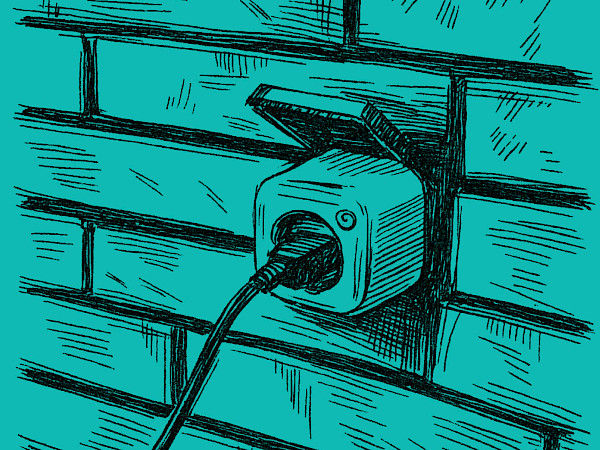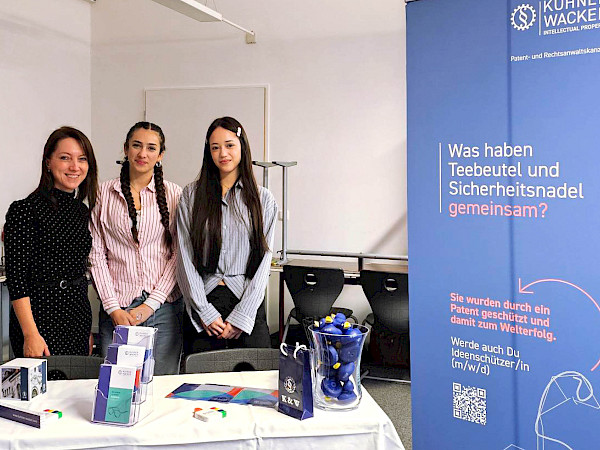Happybrush – Good for your teeth and the environment
12.05.2022
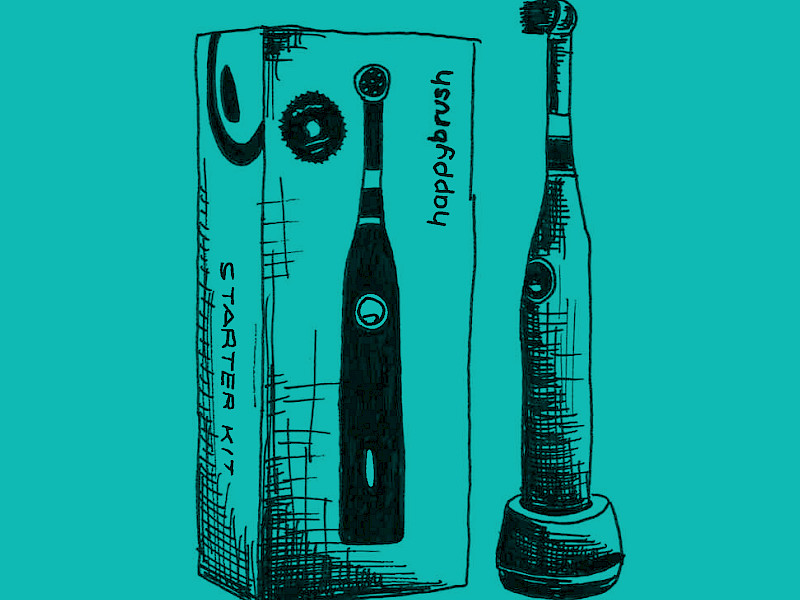
The Shark Tank of Patents
In season 4, episode 8, of the TV show "Die Höhle der Löwen" (German version of the US show Shark Tank and the UK show Dragon's Den), a young startup from Munich presents an electric sonic toothbrush. The Happybrush is a sonic toothbrush that is supposed to clean teeth very thoroughly while brushing with 30,000 vibrations per minute. The Happybrush heads are just as easy to replace as those of a conventional electric toothbrush.
A German patent application was filed for the Happybrush, for which a German search report had been issued. The Happybrush is intended to illustrate the hindsight perspective when assessing inventive step.
Note: For this 2017 application, a search report has been issued, where the applicant has made use of the option of deferred examination. This gives the applicant 7 years to file the request for examination for this application and thus provides him with time to incorporate strategic decisions, e.g. regarding product developments, competition and commercial exploitation, into IP prosecution.
The German patent application –
DE102017207567A1 (DE'567)
Subject-matter of protection
Originally, an attempt was made to protect the Happybrush with an independent claim directed to an attachable brush (cf. reference signs in brackets from Figs. 1 and 2 of DE'567).
Claim 1 of DE'567 defines the following features:
M1: An attachable brush (1) for an electric toothbrush, comprising:
M2: an elongated neck (2) at one end of which a brush head (3) with a plurality of bristle tufts (4) is arranged, and the other end (5) of which is adapted to connect the attachable brush (1) to a handpiece of an electric toothbrush,
M3: wherein the neck (2) comprises a bending elastic longitudinal portion (6), characterized in that
M4: the bending elastic longitudinal portion (6) is formed by at least two bridges (7) connecting a first part (2a) and a second part (2b) of the neck (2).
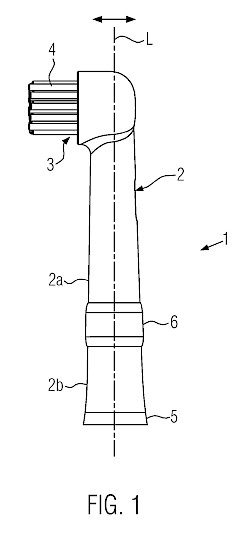
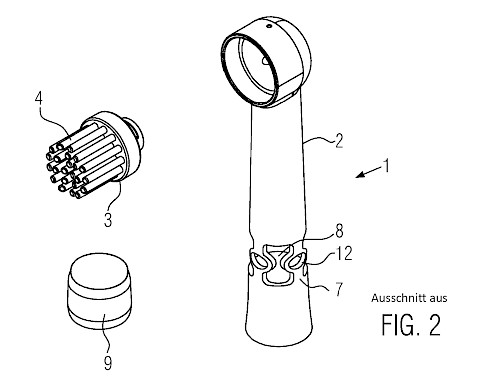
Figure 1 and 2 from DE'567
Prior art
In the search report, the examiner cites D1 (DE3805326A1) and D2 (US20130180063A1) as relevant to the claims of DE'567. In particular, the examiner does not consider claim 1 to be novel over D1.
Claim 1 – Lack of novelty over D1
(DE3805326A1)
D1 discloses (cf. Fig. 2 of D1) an attachable brush for a preferably electromechanical drive. The attachable brush has a brush shaft 1 which, in a deflection section 2 adjacent to the brush head 3, is shaped over part of its length in each case in a manner similar to a leaf spring according to the clicker principle by means of a deflection profile 4 in such a way that, during tooth brushing, there is an optimum contact pressure until the brush head 3 is deflected (bent position 5) (cf. paragraph [0016] in D1).
The attachable brush of D1 thus fulfills at least features M1 to M3 in claim 1 of DE'567.
Furthermore, in D1 the deflection profile 4 is described with reference to Figs. 3 to 5 of D1. Figs. 3 to 5 of D1 show the following deflection profiles 4 in cross-section of the deflection section 2:
Thus, the deflection profile 4 described in D1 also fulfills the feature M4, since it likewise discloses a type of bending elastic longitudinal portion with two bridges connecting two parts of the neck (cf. profile strips 4a and 4b in Fig. 4 of D1 above).
Thus, original claim 1 of DE'567 is not novel over D1.
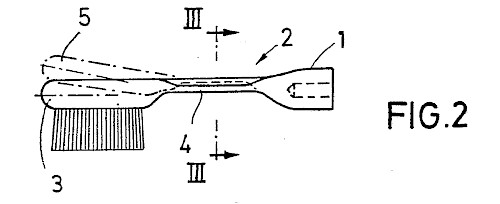
Figure 2 from D1

Figures 3 to 5 from D1
Effective delineation
from the prior art
In the following, we propose a way for effective differentiation from prior art, from our perspective.
Claim 1 could be distinguished from D1 by specifying the neck as "hollow" (cf. paragraph [0008] of DE'567). In D1, the deflection section 2 of the neck is not hollow (cf. deflection section 2 in Fig. 2 of D1).
Note: This distinguishing feature sounds self-evident, especially if the prior art D2 described below is taken into account. However, when assessing inventive step, it is very important to avoid such a hindsight perspective (so-called ex post facto analysis), which results from the knowledge of the invention to be assessed (here DE'567).
The "hollow neck" feature has the advantage, compared with the attachable brush of Fig. 2 in D1, of enabling simple and inexpensive manufacture of bending elastic attachable brushes.
Starting from D1, in particular the attachable brush in Fig. 2 of D1 as closest prior art, a modification in the form of a hollow design of the deflection section 2, which is the core of the invention in D1, could be conceivable. In principle, the skilled person who has to evaluate the inventive step would not completely reject the core idea of the closest prior art in order to achieve the above-mentioned advantage.
The skilled person could refer to D2 (US20130180063A1). D2 aims to provide an electric toothbrush head of the round head type (cf. paragraphs [0035] and [0036] of D2, and Fig. 1 of D2 as shown below). In this regard, D2 discloses a sleeve 11 having a flexible region 19 which allows the part of the sleeve between the bristle support 13 and the flexible region 19 to move relative to the connection 12 under pressure on the bristle support 13.
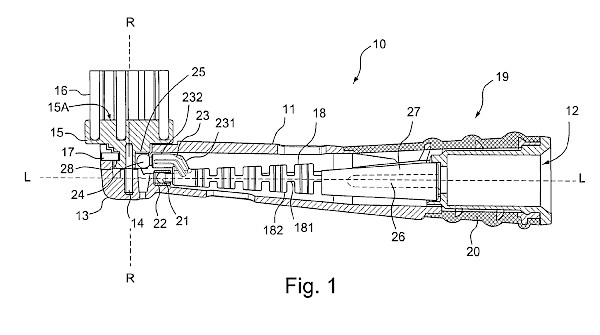
Figure 1 from D2
Here, the skilled person would ask the question of compatibility of D1 and D2.
On the one hand, the skilled person could try to add additional components as disclosed in D2 to the attachable brush of D1 in order to improve it - in particular in the sense of simpler and less expensive manufacture (see advantage described above). This approach would at least not lead to the above-mentioned solution, since this would not result in any change to the deflection section 2 in Fig. 2 of D1, which can be associated with the neck of DE'567.
On the other hand, the skilled person could try to modify components of the attachable brush from Fig. 2 of D1 in the sense of the disclosure from Fig. 1 of D2. However, the skilled person would not apply this procedure to the core idea of the deflection section 2 in Fig. 2 of D1, since otherwise the advantages from D1 itself would be gone.
Furthermore, the skilled person also lacks any instructions as to where and how the deflection profiles 4 from D1 should be formed in the sleeve 11 from D2.
Even if the skilled person were to adapt the deflection section 2 in Fig. 2 of D1, the skilled person would have merely referred to the paragraph [0039] of D2, which teaches the skilled person that the sleeve 11 has openings filled with thermoplastic elastomer material 20. Thus, the skilled person would only fill the openings occurring in the deflection section 2 from Fig. 2 of D1 with the elastomer material. However, this procedure would have nothing to do with the advantage mentioned above, making this procedure very unlikely.
Thus, such an amended claim 1 of DE'567 would consequently not only be novel, but presumably inventive over the prior art cited in the search report.
Note: The approach presented here is only one of several possibilities and is based only on the prior art cited in the search report. From the original application documents, there are still further possible delimitation features compared to the prior art cited in the search report, for example with regard to the bridges or the brush head.
Conclusion
It was shown how an effective differentiation of claim 1 from the cited prior art could be achieved by means of an allegedly self-evident feature. In particular, it wanted to show that changes that seem simple in themselves can be used to argue not only novelty, but often also inventive step. Very often it can be observed that with the help of a tiny clarification in the claim, here "hollow neck", a technical advantage can be achieved which, starting from the prior art, cannot be obtained in the same way without hindsight perspective. This finding of minimally restrictive but nevertheless sufficiently delimiting features is one of the core competences of patent attorneys.
Disclaimer: The above contribution reflects the personal opinion of the author. The assessments and statements made in the article do not constitute legal advice and are provided under exclusion of any liability. If you need an assessment of an individual case, please contact the author and/or the law firm KUHNEN & WACKER.
その他のニュースや
K&Wからの情報

K&Wでキャリアをスタートさせ、チームの一員になりませんか?
チャレンジ精神と柔軟性に富んでいると自覚していますか?自分から率先して責任のある仕事に係わりたいですか?それなら当事務所は最適な職場です。


